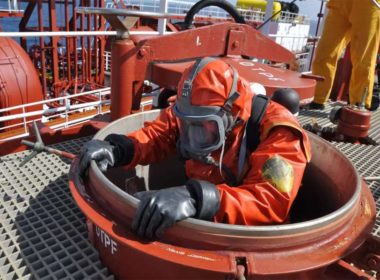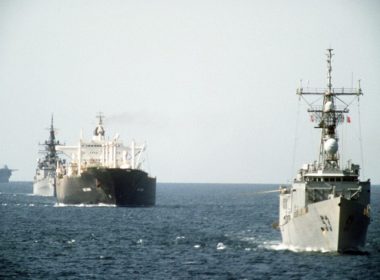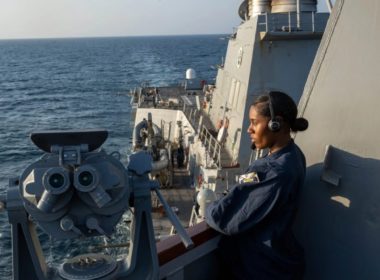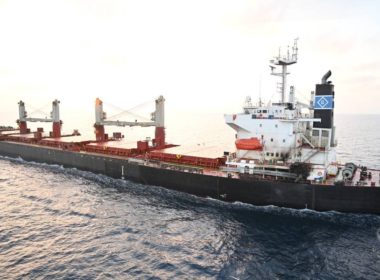COLUMN | The reality of changing risk [Grey Power]

It was a remark by an insurer, commenting on the probable of level of claims after the Baltimore bridge strike incident, that took my attention the other day.
Insurers, said this expert, needed to be more aware of “low probability, high-cost claims” in the future. In an era of 24,000TEU containerships, cruise ships, with 8,000 passengers embarked, and expensive infrastructure close to the water’s edge, it is difficult to argue with this assertion, but might the “probability” of catastrophic claims be altering in a way that nobody really has properly grasped?
This rather takes me back very many years when on a voyage to the Antipodes from the UK, we carried as a passenger an elderly Lloyd’s underwriter. He was the very best sort of passenger: interested in what went on in every department, fascinating company in revealing a lot of what few of us had the opportunity to learn about the world’s premier insurance market, and an extremely pleasant person.
When he left us after a month’s voyage, he said that he wished that he had taken the voyage thirty years before, because it would have enabled him to make far better decisions in his assessment of risk, when some cheery broker approached him with an attractive offer.
You are free, of course, to suggest that his close contact with our vessel and its ship’s company might have so appalled him with our standards that his whole personal judgement of a marine risk was henceforth altered. We preferred to believe that his voyage had shown him the very best standards, and his experience with us would merely enhance his expert assessments.
“It is the same everywhere, with the fact that it is easier and infinitely faster to build bigger and bigger ships than to expand the safety envelope around them.”
Perhaps it demonstrated that everyone, in whatever arm of shoreside maritime infrastructure, would benefit from some exposure to salt water. This long-standing belief itself has never changed over the years, whatever else might have done. But risk itself does materially change, although it might take a dramatic accident to draw attention to this fact.
To take just one example, the Francis Scott Key Bridge in Baltimore was completed half a century ago, when insurers were expressing concerns about the prevalence of 2,500TEU containerships and the average size of cargo ship on the US coast was about 12,000 DWT. And while the good harbour managers have been encouraged to dredge the channel, its width under the navigable spans remained the same as the decades ticked away.
It is the same everywhere, with the fact that it is easier and infinitely faster to build bigger and bigger ships than to expand the safety envelope around them, being something that nobody really likes to confront. A port management doesn’t willingly turn away customers who announce that they will take their business elsewhere, unless the port makes provisions to work their next generation of bigger ships.
“Will the comfort of ‘low probability’ come back and bite the industry, if its luck runs out?”
One can mitigate any nervousness about increased risks by comforting statistical surveys that show that tugs are more capable these days, or that ships are less likely to break down because of better regulatory supervision. The percentage game is easy to play – “low probability means it probably won’t happen to us.” Sometimes you lose.
But are these comforting numbers quite so reliable? Since the calamity in Baltimore, there has been a regular stream of reports about what is described as “bridge strikes,” which, even if they do not result in such destruction, are more regular than people seem to have thought. You might thus argue (and some counsel for somebody’s defence surely will) that it would have been only prudent if an unescorted passage of a far bigger ship was to be permitted, to have incorporated some substantial armour around the bridge, with both cost and probability of a potential strike clearly altering.
There are plenty of other areas in which insurers ought surely to have been looking more quizzically at their assumptions. Take the incidence of engine malfunctions, which pilots report are multiplying, whether as a result of crew incompetence, poor maintenance, or all this chopping and changing with fuel. We need to learn some more about the reasons, one might suggest.
What about the ultimate horror of a cruise ship accident? A low probability, we might quickly assert, but we have had some worrying near misses in recent years, with the 228-metre-long Viking Sky close to being washed ashore off Norway after she was disabled, the 300-metre-long Norwegian Prima within feet of grounding off the coast of Iceland after being blown off course by high winds, and the unfortunate Maud smashed up in a North Sea storm.
Will the comfort of “low probability” come back and bite the industry, if its luck runs out? It scarcely bears thinking about, except we ought.







